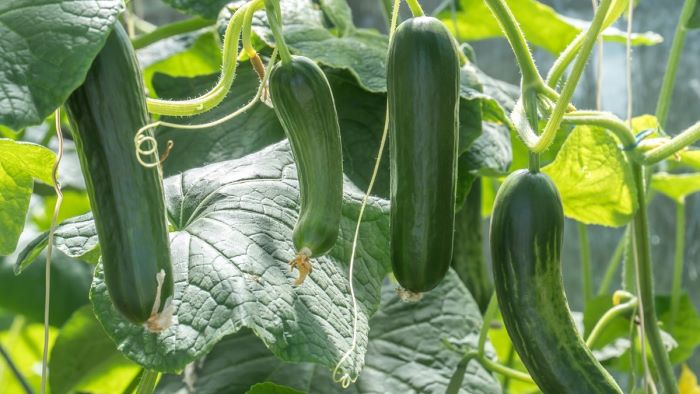If you are looking for a vegetable that is easy to grow and nutritious to eat, look no further than zucchini. Also known as courgette or summer squash, zucchini is a member of the Cucurbitaceae family. We will show you how to grow zucchini plants successfully in your home garden. Plus, we will cover topics such as zucchini growing tips, how to grow zucchini plants, how to prune and harvest zucchini plants, and other related topics.
By following these tips, you will be able to grow your own zucchini plants and enjoy a plentiful harvest of zucchini throughout the summer and beyond.
So, get ready to learn how to grow zucchini plants like a boss!
Contents
6 Tips for Growing Great Zucchini Plants
Zucchini is a popular summer vegetable that produces abundant harvests of tender and delicious squash. Although zucchini plants are easy to grow and relatively trouble-free, they do require some care and attention to thrive. Here are six tips for growing great zucchini plants in your home garden.
1. Plant in Hills or Mounds
One of the best ways to plant summer squash is to create raised mounds or hills of soil that are about 12 inches high and 24 inches wide. This will help the soil warm up faster in the spring, improve drainage, and provide more room for the roots to spread out. You can also mix some compost or organic matter into the soil to enrich it and make it more fertile.

Furthermore, plant two or three zucchini seeds or seedlings per hill, spacing them about 6 inches apart. If you are planting seeds, it is recommended to cover them with about half an inch of soil and water well. If you are transplanting seedlings, make sure to harden them off first by exposing them gradually to outdoor conditions for a week or so before planting.
2. Monitor Pollination
Zucchini plants have both male and female flowers, but only the female flowers produce fruits. The male flowers provide pollen for the female flowers, which have a small zucchini behind them at the base. It has been observed that to ensure good pollination, both types of flowers need to be open at the same time and enough bees or other insects need to transfer the pollen.

Sometimes, zucchini plants produce only male flowers at first, which can be frustrating for gardeners who want to see fruits form. However, this is normal and will change as the plants mature, so there is no need to worry.
3. Don’t Plant Too Early
As we know, zucchini plants are very sensitive to cold and frost, so don’t plant them too early in the season. Wait until the soil temperature is at least 55°F (13°C) and all danger of frost has passed in your area. In addition, you can use a soil thermometer to check the temperature, or contact your local extension office for more information on planting times.
If you want to get a head start on the growing season, you can start your zucchini seeds indoors about four to six weeks before the last frost date. Use peat pots or biodegradable containers, which can be planted directly into the ground without disturbing the roots.
Keep the seedlings in a warm and sunny spot indoors until they are ready to be transplanted outside.
4. Look For Squash Borers
One of the most common pests that can affect zucchini plants is the squash borer, which is a type of moth larva that burrows into the stems and feeds on the plant sap. This can cause wilting, yellowing, and eventual death of the plant if not treated promptly. To prevent squash borers from attacking your zucchini plants, you can try some of these methods:
- Wrap aluminum foil or cardboard around the base of the stems to deter the moths from laying eggs there.
- During the peak egg-laying period (late spring to early summer), cover your plants with floating row covers or insect netting.

- Inspect your plants regularly for signs of damage or frass (sawdust-like droppings) near the stems.
- Cut open any infested stems with a sharp knife and remove the borers by hand.
- Apply an organic insecticide such as Bacillus thuringiensis (Bt) or spinosad to kill the borers.
5. Water and Fertilize Regularly
Zucchini plants need plenty of water and nutrients to grow well and produce large fruits. So, water your plants deeply and evenly at least once a week, or more often during hot and dry weather. Avoid wetting the leaves or flowers, as this can cause fungal diseases or poor pollination. It is suggested to use a soaker hose or drip irrigation system to deliver water directly to the roots.
Furthermore, fertilize your plants every two weeks with a balanced organic fertilizer that is high in nitrogen, such as fish emulsion or compost tea. This will help your plants grow strong and healthy and prevent blossom end rot, which causes black spots on the bottom of the fruits due to calcium deficiency.
6. Harvest Zucchini Plants
The best part of growing zucchini is harvesting and enjoying your fresh squash. Zucchini can be harvested at any stage of growth, but they are most tender and flavorful when they are about 6 to 8 inches long. Don’t let them grow too large, as they will become tough and seedy. Harvest your zucchini by cutting them off the vine with a sharp knife or pruning shears, leaving about an inch of stem attached.
Plus, you can store your harvested zucchini in the refrigerator for up to a week, or freeze them for longer storage. You can also pickle, dry, or can your zucchini for later use.
Zucchini can be eaten raw or cooked in a variety of ways, such as grilling, roasting, sautéing, baking, or making zucchini bread or muffins.
Read More:
FAQs
How big do zucchini plants get?
Depending on the variety and growing conditions, zucchini plants can grow to be around 2-4 feet tall and 2-4 feet wide. Some zucchini plants can reach up to 6 feet tall and 5 feet wide. The fruits themselves can grow up to 2 feet long and weigh up to 11 pounds.
How to prune zucchini plants?
Pruning zucchini plants can help improve air circulation, prevent diseases, and encourage fruit production. To prune zucchini plants, you can remove any dead, diseased, or damaged leaves and stems. You can also trim off some of the lower leaves to expose the fruits and make harvesting easier.
How to plant zucchini plants?
Zucchini plants can be planted from seeds or seedlings. You can start seeds indoors 4-6 weeks before the last frost date, or sow them directly in the garden when the soil temperature is at least 55°F (13°C). You can also buy seedlings from a nursery and transplant them after hardening them off. Plant zucchini in hills or mounds of well-drained, fertile soil, spacing them about 1.5 feet apart.
Is trimming Zucchini plants ok?
Trimming zucchini plants is ok if done properly and for a good reason. Trimming can help reduce the size of the plant, improve air circulation, prevent diseases, and encourage fruit production. However, trimming too much or too often can stress the plant and reduce its yield. You should only trim off dead, diseased, or damaged leaves and stems, or some of the lower leaves that shade the fruits.
Conclusion
Zucchini plants are easy to grow and relatively trouble-free, but they do require some care and attention to thrive. By following the zucchini growing tips we shared in this blog post, you can grow your own zucchini plants and enjoy a bountiful harvest of zucchini throughout the summer.
Furthermore, you can also experiment with different varieties, recipes, and uses of zucchini to make the most of this versatile crop. Zucchini is not only a delicious vegetable, but also a fun and rewarding one to grow.
We hope you enjoyed this blog post and learned something new about how to grow zucchini plants.
Happy gardening!😊

Hi, I’m Jacqueline, the editor-in-chief of cozynest. I have a passion for plants and gardening, also, have a degree in horticulture from the University of California, Davis. I love to share my knowledge and experience with our readers and help them create beautiful and healthy gardens, indoors, and outdoors. I also enjoy experimenting with different plant varieties, designs, and techniques, and learning from other experts in the field. When I’m not working on cozynest, you can find me in my own cozy nest, surrounded by my favorite plants and books.


1 thought on “Zucchini Growing Tips: How to Grow Zucchini Plants?”